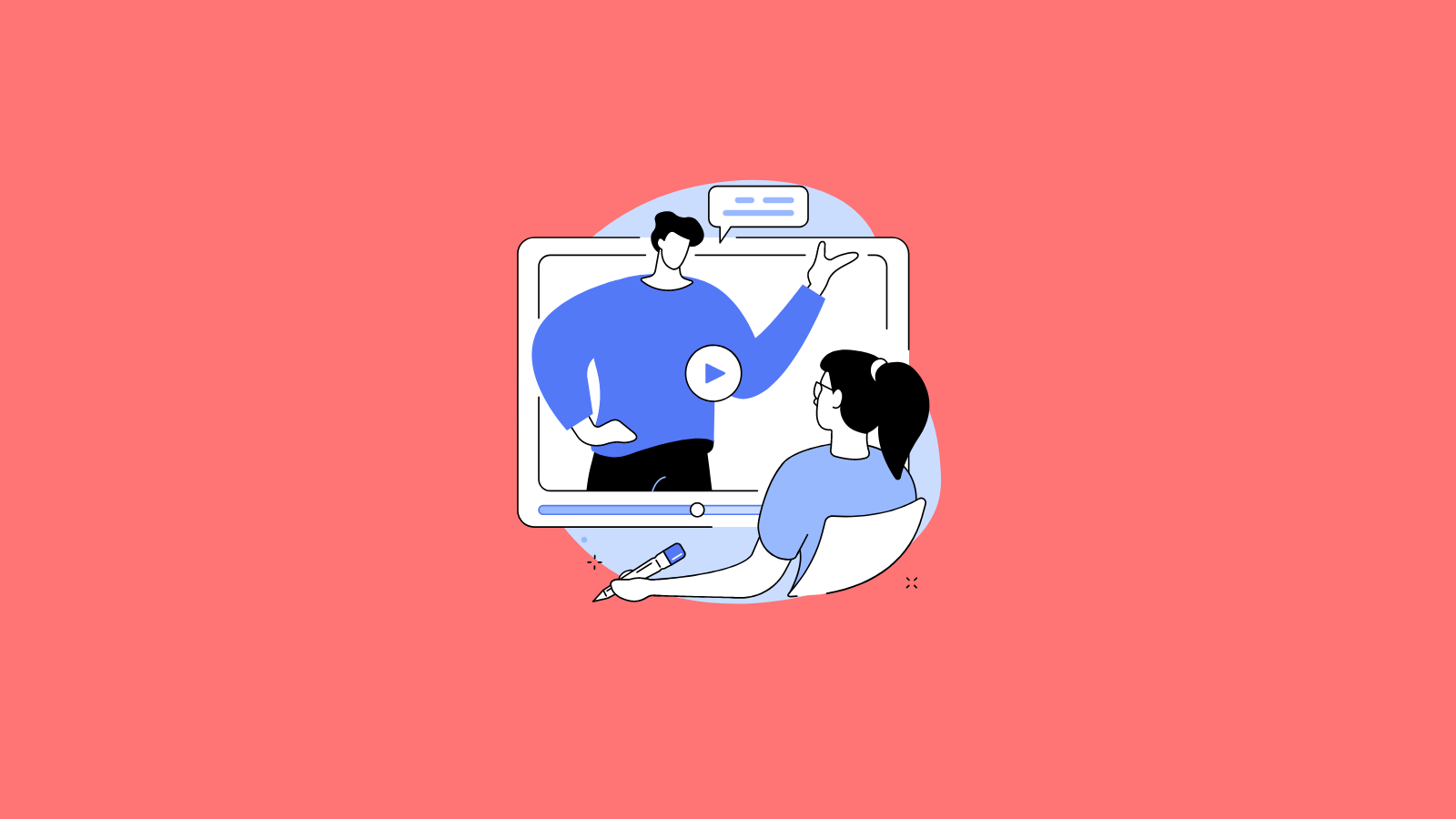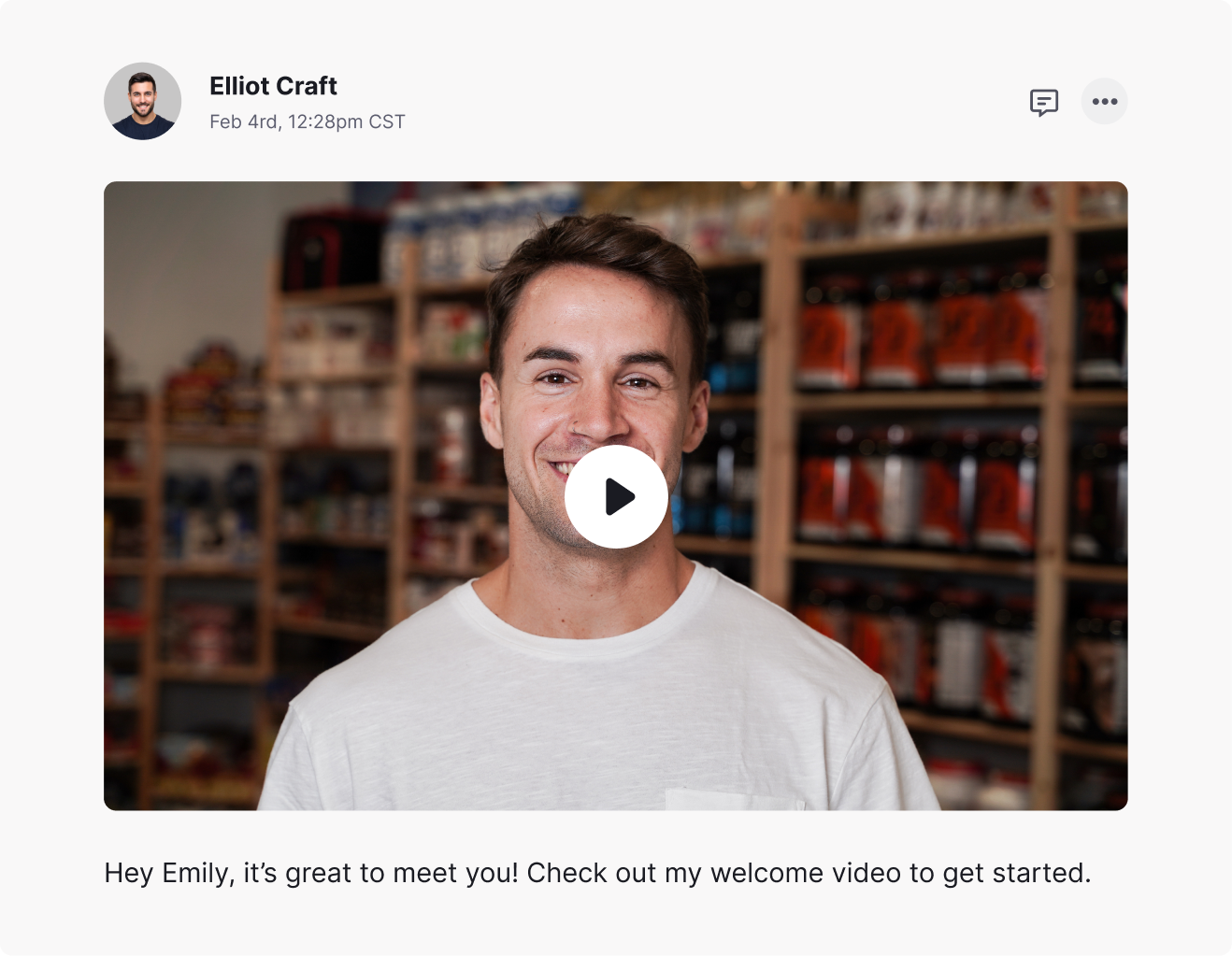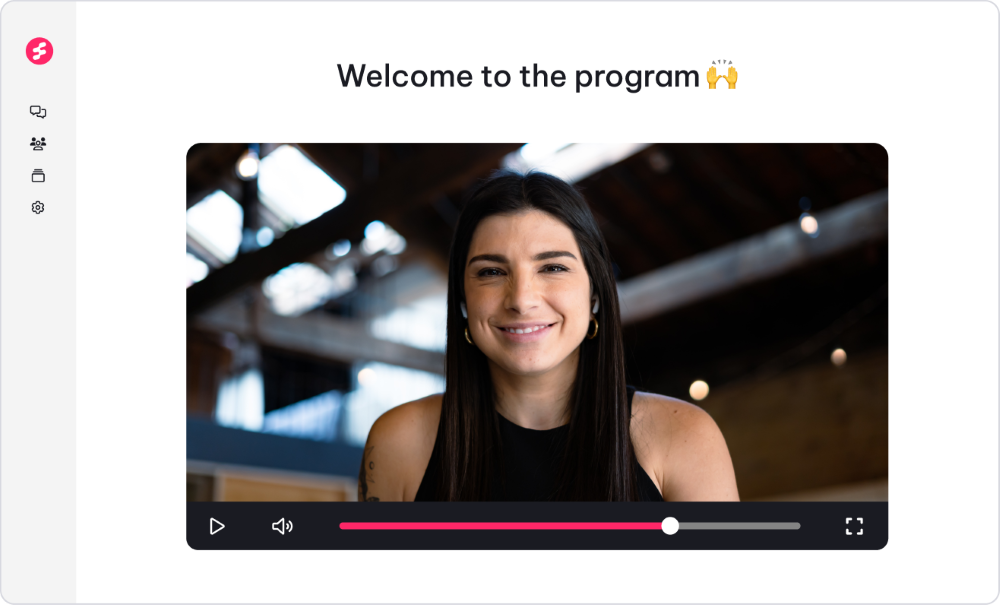What is Asynchronous Coaching: How Coaches Scale with Async Communication

Are you struggling to meet coaching clients’ demands for your time? Wondering how you could coach clients without having to book more and more calls all the time?
As a coach, your relationships with your clients makes (or breaks) your business. You got into coaching to share your knowledge and expertise to help others achieve incredible success. What could be better than that?
But live, direct coaching has its limits. - There are just not enough hours in the day, and try as you might; sometimes, there’s just no space left in your calendar for more clients.
How could you scale your coaching business and work with more people without cloning yourself or burning out?
Well, the good news is that there is a way around it. Naturally, I’m not talking about any magic trick that would help you make the day longer. But there is a way to work with clients without constantly having to jam your calendar and deliver coaching sessions without booking another call.
It’s called asynchronous coaching, and in this guide, you’ll learn exactly what it is and how to start coaching clients by exchanging messages asynchronously.
Here's what we'll cover:
What is asynchronous coaching
Discover what it means to deliver coaching asynchronouslyWhy coaches turn to asynchronous coaching
Learn how your coaching business benefits from asynchronous coaching.How to leverage asynchronous coaching
See how other coaches use asynchronous communication alreadyTools for asynchronous coaching
Learn the best tool to use to deliver asynchronous coaching.
What is Asynchronous Coaching
The term - asynchronous coaching - refers to a flexible form of coaching in which a coach uses asynchronous communication with video or text to scale their engagements with clients without having to book additional calls or rely on email for those in-between session chats.
Before we get any further, let’s define what it means to communicate asynchronously.
I believe that it’s important for you to understand the concept of asynchronous communication to learn how to use it to scale your coaching business.
So, asynchronous communication occurs when you conduct back-and-forth communication without the need for participants to be present for it, live, at the same time.
Take email, for example. When emailing someone, you exchange information and messages, but the conversation doesn’t necessarily happen in real time. Of course, the other participant can respond to your emails right away. But they can also do it after a couple of hours or longer, making the conversation asynchronous.
An in-person meeting or a Zoom call, on the other hand, is the opposite. In this case, the conversation happens in real-time or synchronously. All participants are present and must have made arrangements to their schedule to conduct this live, face-to-face meeting.
How Coaches Use Asynchronous Communication
Asynchronous coaching is a great way to scale client engagements. It’s not a strategy to replace traditional coaching, naturally. But it allows you to enhance your engagements with clients by opening an additional communication channel that does not rely on booking more slots in your (or your clients’) calendar.
For that reason, asynchronous coaching is ideal for:
Answering client questions. Chris Lema, a business coach and one of our customers, told me that asynchronous coaching allows him to deliver answers to clients without booking a call.

Scaling back-and-forth conversations. Since neither you nor your client is tied to any specific time to have a conversation, you can engage with more clients every day.
Sharing updates to individual clients or groups. Finally, you can use asynchronous coaching to deliver advice to groups, and let each participant view and reply to it at the time that works for them.
Why Coaches Turn to Asynchronous Coaching
We’ve already established one benefit of asynchronous coaching - allowing you to scale client communication without having to work longer hours and days.
But incorporating asynchronous communication offers even more benefits for your coaching practice. Here are the main ones:
#1. Reduced video meeting fatigue
It’s true; Zoom fatigue is real. Countless research projects found that those live calls can seriously burn you out and negatively impact your physical and mental health.
It makes sense. Every meeting requires you to remain present and focused, after all. You also need to respond to many client requests without having sufficient time to process those and collect ideas. And on top of that, you might be constantly conscious of how you look on screen and that whatever you do is broadcasted to the other person.
This can get to anyone, regardless of how accustomed to live calls you might be.
Asynchronous videos help you reduce the negative effect of prolonged live calls. In this case, you get a chance to collect your thoughts and even record many takes to present your ideas in the best possible way.
Not to mention that it takes less time to respond asynchronously, and there are gaps between when new messages arrive.
#2. Fewer technical issues to deal with
I agree; this may not seem like a significant benefit at first. But think about all those Zoom calls that began by either you or the other person checking whether you two can hear each other. Or those camera issues that took forever to resolve, eating up the precious time in your schedule.
Asynchronous communication reduces those by eliminating the need for using technology for real-time conversations.
#3. Greater flexibility to engage with clients
With asynchronous coaching, you can engage with clients at the time that works for you and are never restricted by your or the client’s calendars.
#4. Ease of access for all participants
Unlike Zoom, for example, asynchronous video tools like Clarityflow do not require your clients to sign up or download anything to engage with you. Instead, they can reply to videos on your account and submit their clips using custom intake forms.
#5. Overcoming coaching objections
Asynchronous coaching greatly extends the traditional way of helping and assisting clients. But did you know that it could also help you overcome coaching objections?
Many people resist hiring a coach, and their reasons for procrastinating usually fall into one of a handful of categories. Sure, for some, it’s the money to commit to being coached.
But for some, it’s time. They fear that they can’t commit to a specific schedule. Other clients fear that coaching might not be for them, for example, or that your personality won't’ match theirs.
Still not convinced? Listen to Justin Wise's take on incorporating async communication to build a sustainable business model:
You know what - Asynchronous coaching offers an opportunity to help those clients get a taste of your service and discover its value.
One example of how to do it is by offering an asynchronous coaching-only package at a lower cost and getting a foot in the door with those people.

How to Leverage Asynchronous Coaching In Your Business
I mentioned this a couple of times already. Still, I think it’s worth repeating - Asynchronous coaching is a fabulous way to complement the traditional coaching methods - live calls or meetings - with other communication methods.
And here are four ways I’ve discovered to allow coaches to make the most of asynchronous communication.
Please note - Most of the advice you’ll read below comes from conversations with Clarityflow customers - coaches like you. This is how they use asynchronous coaching in their businesses and the methods that help them fully leverage this strategy.
#1. Always use a single conversation thread per customer
It's so frustrating, isn’t it?
You need to retrieve some information from a client. But to do it, you have to scour all the email conversations with them just to find that one message containing the data you seek.
Unfortunately, it’s easy to make the same happen when you’re using asynchronous messages. But unlike with email, there is a way to avoid it.
Set up a single message thread for each client. Then, ensure that you and the client only post messages to that conversation. This thread should continue throughout the lifetime of that client’s coaching engagement, making it the single archive of all video messages with them.
As a result, you’ll have all your and the client’s asynchronous conversations in one place, and you’ll only need to refer back to previous messages when looking for information.

#2. Use asynchronous video to give clients their training assignments
Many coaches use asynchronous videos to support training. For example, if you regularly give clients assignments, you can explain the assignment using async video.
But what’s more, you can also ask them to submit their assignment by replying to your video.
Well, naturally, this method might not work for every assignment. But if what you ask clients to do requires them to either perform a specific task or show that they’ve learned a new ability, then a video would be perfect.
Take a language coach, for example. She could record a video to ask clients to practice speaking phrases and ask them to reply by showing how well they’ve mastered the pronunciation. She could, then, offer each student feedback asynchronously, making it easy for her clients to improve their skills.
Another example - A sales coach might ask sales reps to practice the methods for overcoming buyer objections covered during a coaching session. Based on their video submissions, the coach can then give feedback on how reps handled those.
#3. Scale group coaching with group video conversations
Group coaching is an amazing way to bring people sharing the same problem and help them overcome their challenges. But it’s also something that heavily relies on managing appointments across multiple calendars and even time zones.
Asynchronous coaching allows you to achieve the same result - help a group of people overcome their challenges - but without all the stress of booking and managing group calls.
Many coaches using Clarityflow bring a small group of clients into one conversation. Then, they post messages for everyone to view and act on at a time that works for them.
#4. Invite clients to message you with a video
Often, a major obstacle in coaching someone is that you’re rarely present at the time when whatever problem the person has manifests itself in their life. For example, you are not there with a salesperson when she struggles to overcome objections on a sales call. Likewise, you can’t see a business client when they struggle to organize their schedule for the day.
But with asynchronous video, you can ask them to show you what it’s like. Clients can send you asynchronous videos captured in those moments when they struggle with what you’re helping them with.
One of our clients, for example, a pet training coach, asks her clients to catch pets in the act of doing whatever activity she and the owner try to eradicate. These videos give her a perfect understanding of the challenge and allow her to guide coaching to maximize results.
Asynchronous Coaching Tools - How Clarityflow Helps You Leverage Asynchronous Coaching

Clarityflow (disclaimer - this is our tool) is an asynchronous video messaging software that helps coaches like you record and share videos with clients.
We’ve built Clarityflow to make it easy for you to coach more clients without having to book more and more live calls, and we’ve packed it with amazing features:
Threaded coaching conversations. With Clarityflow, you can give each client an official space to exchange messages asynchronously.
Screen sharing, camera, and audio: With Clarityflow, you can record and share your screen, turn on the camera, or do both simultaneously to send clients progress updates, hold Q&A sessions, or even simple check-ins without jamming your calendar to the brim.
Conduct 1-on-1 or group calls: Create a video, generate a personalized URL, send it to a group of clients, and scale your reach.
Personalized URLs: Customize URLs per your calls or set your Clarityflow link as per your brand name.
Privacy: Mark your asynchronous video link as private if you want a selected group of people to see your videos.
Clarityflow also integrates with Slack, Zapier, Chrome, and Firefox; you can even embed Clarityflow conversations on your website using a simple HTML embed code.
Closing Thoughts
Being a coach is so amazing. Every day, you get to help clients overcome obstacles to a better life. But with only so many hours in the day, and so much time for clients on your calendar, running a coaching business can quickly become frustrating.
Asynchronous coaching allows you to expand your reach and coach more clients without having to jam your calendar even more.
In this guide, you discovered what it means to coach clients asynchronously and how to leverage this communication method to scale your business.
All that’s left is to give it a try.
Good luck!
Want to see how delivering coaching asynchronously can help you coach more clients? Learn more about how Clarityflow helps coaches scale their businesses.



